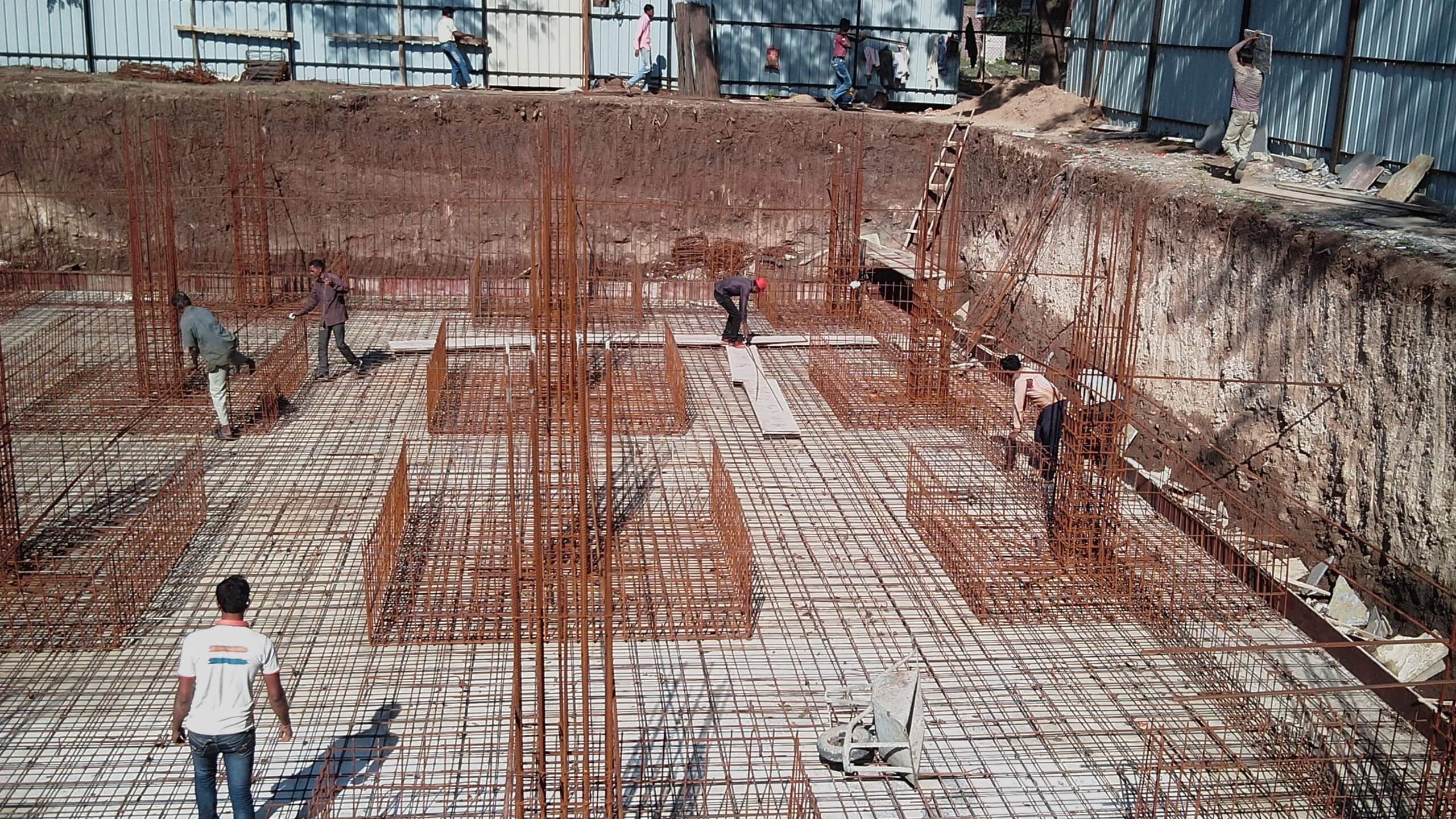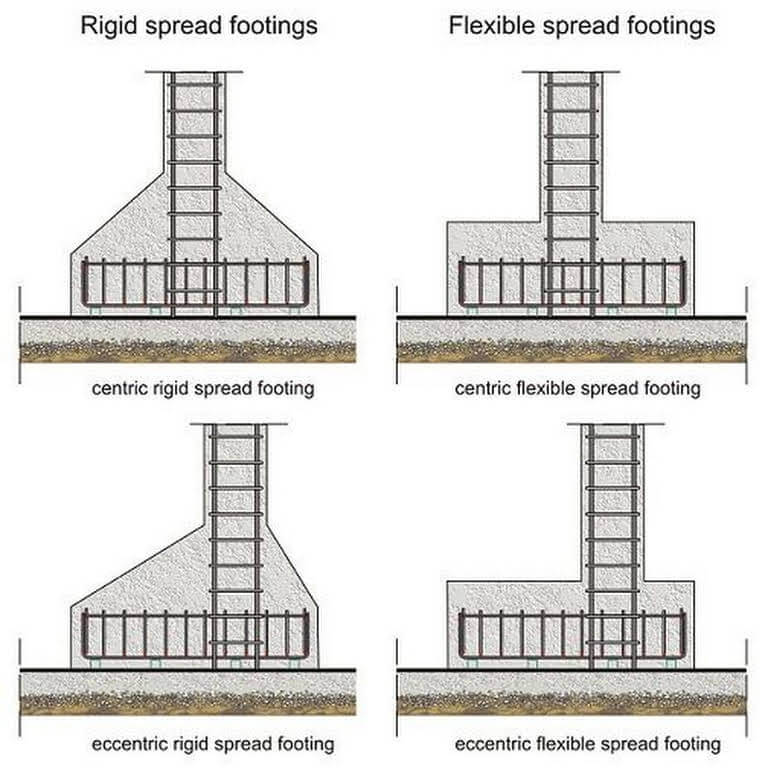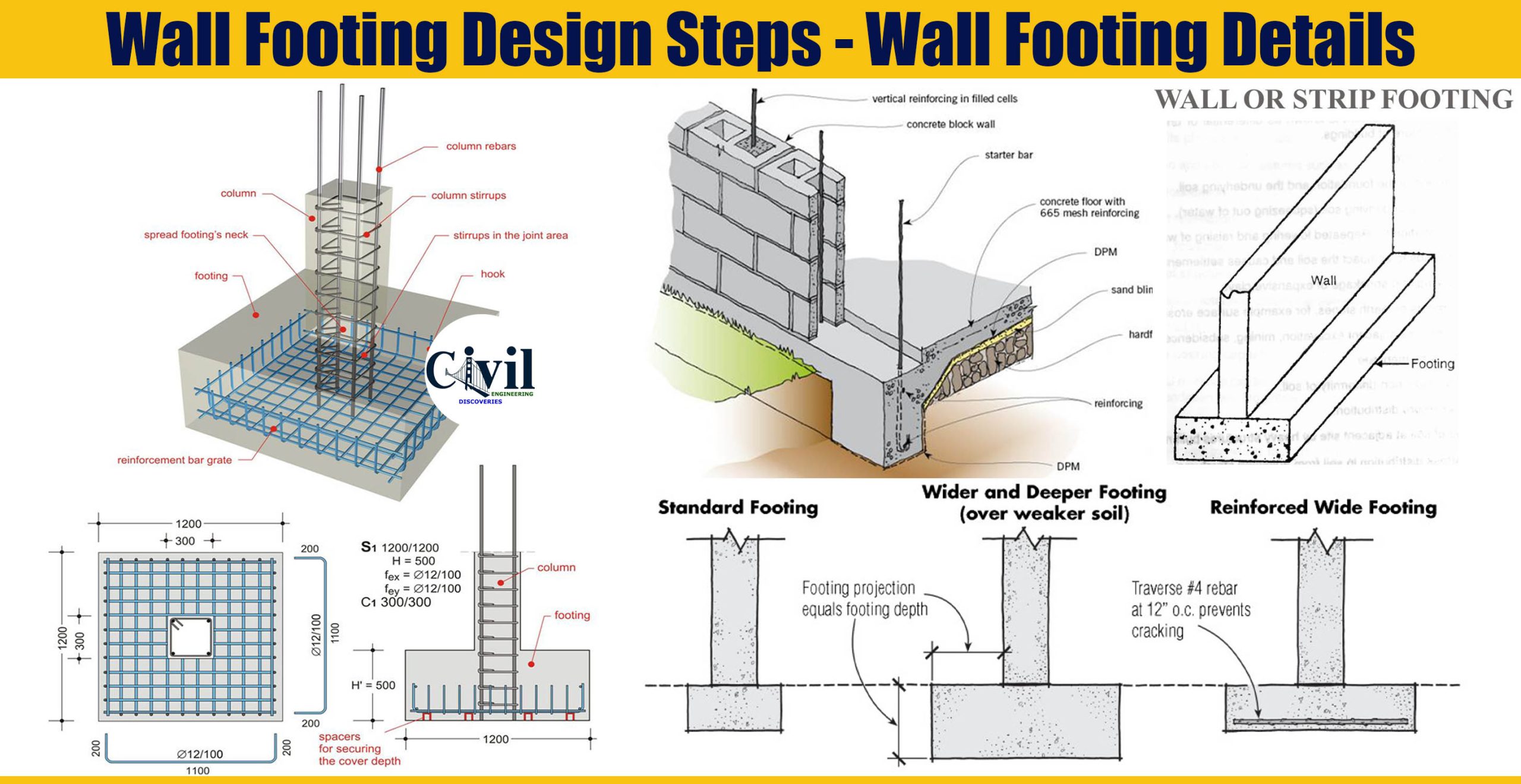
How To Build A Strong Foundation For Structures Engineering Discoveries
Footings in construction are an important part of any building project, providing support to the foundation of the building and helping to ensure the structure is stable and secure. They are designed to distribute the weight of the building evenly and to reduce the risk of damage caused by shifting soil and movement.

Combined Footing Daily Civil
Building footings is usually the first step in construction after the excavation is complete. The hole for the footing must be dug first, and then the footing itself must be created. The depth of the footing hole depends on the type of soil and the size of the building.

Reinforcement Detailing Of Isolated Footing Engineering Discoveries
Footing foundation is a type of foundations. It is a shallow foundation. It is normally reinforced concrete structure. Footing foundations are constructed to support columns or similar structures. They are used to support structures having low axial loads. Footings are rested on the soil having the adequate bearing capacity to carry the applied.

3 Common Types of Building Foundations Brown Concrete and Backhoe
Basically, footing means the enlargement of the base of a column or wall for the purpose of distributing the load on the supporting soil. Footings are structural members that are used to support columns and walls, while the load-carrying capacity of the soil is not high.

Spread Footings and the Details Before Construction Engineering Feed
Definition of building foundation Types of foundations Shallow foundations Isolated footings Wall footings Combined footings Strap footings Mat footings Deep Foundations Pile foundation Pier (Caisson) foundation Definition of Building Foundation Foundations transfer forces from structural systems to some external source, typically the ground.

Types Of Footing In Building Construction Engineering Discoveries
🕑 Reading time: 1 minuteClearly, buildings are composed of various structure elements such as slabs, beams, columns, and footings. Each of these structural members play certain role in a structure. This article presents various aspects of these structural members for instance their function, types of loads imposed on them, and load transfer mechanism from one […]

Wall Footing Design Steps Wall Footing Details Engineering Discoveries
The footing of a building transmits load to the soil. The lower the bearing capacity of the soil, the wider the footing needs to be. If the soil is firm, the footing can be narrower. Consider some of the following numbers. Sand has a bearing capacity of about 3000 psf (pounds per square foot). This means for instance that a 12 inch wide footing.

Three Types of Footings to Support Foundation Walls Metrocrete News
1. Strip Footing Strip footing is a component of shallow foundation which distributes the weight of a load-bearing wall across the area of the ground. It is also known as wall footing. This type of footing is commonly used as foundations of load-bearing walls where the soil is of good bearing capacity. 2. Spread Footing
:max_bytes(150000):strip_icc()/concrete-slab-for-a-new-home-175526089-58a5cdbc5f9b58a3c9afa82b.jpg)
House Foundation Types, Uses, and Pros and Cons
Excavation The depth of the footing should exceed the frost line of the project site; otherwise, consider frost protection. If the excavation depth exceeds the designated depth, fill it with concrete or engineered fill material. Use reinforcement in the footing to bridge short soft areas in the excavated area.
:max_bytes(150000):strip_icc()/residential-construction-site-foundation-walls-184391602-58a5ccf85f9b58a3c9ad94bb.jpg)
House Foundation Types, Uses, and Pros and Cons
Footings are structural components found at the base of a building, and their main purpose is to support the foundation. They are typically placed in the ground and beneath the walls or columns of the building, and they also spread the structure load more evenly across the soil.

A Guide to Concrete Footings Rock Foundations
Solution to Common Problems What are Footings? Under every house is a foundation, and under most foundations are footings. Most of the time we take footings for granted, and usually we can: For typical soils, a common 16- or 20-inch-wide footing can more than handle the relatively light weight of an ordinary house. Common footing designs:

What is a Footing in Construction Complete Building Solutions
Pile caps. Pile caps are thick slabs used to tie a group of piles together to support and transmit column loads to the piles. The cost of footings as compared to entire R.C.C. framed structure is less and is about 4 to 5% of the total building can only. Hence one should not economical foundation also pad footings are preferred, though increase.

Types of Footing Building Construction Foundation
Found underneath foundational walls or columns, footings are typically made with reinforced concrete and help redistribute a structure's weight from the foundation into the earth and soil below. Essentially, footings create an additional load-bearing point between the structure and the ground.
/Footing-foundation-GettyImages-600579701-58a47c9b5f9b58819c9c9ff6.jpg)
Guide to Foundation Footings Building Code
A. Definition and Overview B. The Role of Footing in Ensuring Structural Integrity C. The Relationship between Footing and Foundation II. Types of Footing in Construction A. Overview of the 5 Types of Footing B. Detailed Analysis of Each Type C. What is a Pile Foundation in Building Construction? III. Footing Construction Process

Types Of Footing In Building Construction Engineering Discoveries
1. Individual Footing or Isolated Footing Individual footing or an isolated footing is the most common type of foundation used for building construction. This foundation is constructed for a single column and also called a pad foundation.

How to Construct Footing for Residential Buildings with Maximum Two
A footing, sometimes called a footer, is the part of a house that interfaces with the ground. Properly sized and well-constructed footings will keep homes standing level, plumb, and proud for decades, even centuries.